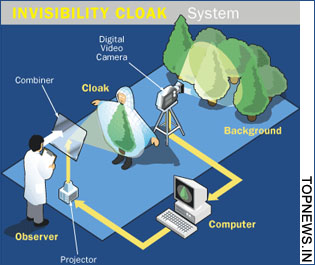Scientists develop invisibility cloaks
 You could, one day in the time to come, have garments that could make you invisible. It sounds incredible, but it’s true. Yes, two teams of scientists have claimed that they have developed cloaks made up of special materials that could one day be used to make invisible garments.
You could, one day in the time to come, have garments that could make you invisible. It sounds incredible, but it’s true. Yes, two teams of scientists have claimed that they have developed cloaks made up of special materials that could one day be used to make invisible garments.
One cloak has been developed by Michal Lipson and her team at Cornell University of New York, while similar cloak has been developed by a term of researchers led by Xiang Zhang, professor of mechanical engineering at the University of California, Berkeley.
The two cloaks renders objects invisible to near-infrared light. The cloaks befool observers by just letting them see nothing but the background view. According to researchers, these are not the first invisibility cloaks ever made, but these certainly are the first cloaks developed using a dielectric or insulating material that absorbs far less light, against previous cloaks using metals.
In the journal Nature Materials, one of the research teams has described their innovation as miniature "carpet cloak". The invisibility cloaks developed by the two research teams are based on a theory first described by John Pendry, from Imperial College London, in 2008.
The material used in cloaks is capable of bending light around 3D objects, making them "disappear". The cloaks can hide things so immaculately that they virtually appear to become invisible. The cloaks are based on light-bending effect – reversing refraction – the phenomenon that makes a straw placed in water appear bent.
The scientists have used nano scale material (measured in billionths of a metre) to bend light around 3D objects. The materials used in cloaks work at wavelengths used in the telecommunications industry, which are near the visible part of the spectrum.
According to scientists, unlike previous such “cloaks”, the new work does not employ metals, which introduce losses of light and result in imperfect cloaking. The cloak’s design cancels out the distortion produced by the bulge of the object underneath, bending light around it - like water around a rock - and giving the illusion of a flattened surface.
Professor Zhang explained, "Essentially, we are transforming a straight line of light into a curved line around the cloak, so you don't perceive any change in its pathway.” According to Zhang, "Metals introduce a lot of loss, or reduce the light intensity, and this loss can leave a darkened spot in the place of the cloaked object. So using silicon, a material that absorbs very little light, is a big step forward.”